At a time when industry has set its eyes on the superprofits to be harvested from seed monopolies through patented seeds and seeds engineered with toxic genes and genes for making crops resistant to herbicides, people are seeking food freedom through organic, nonindustrial food.
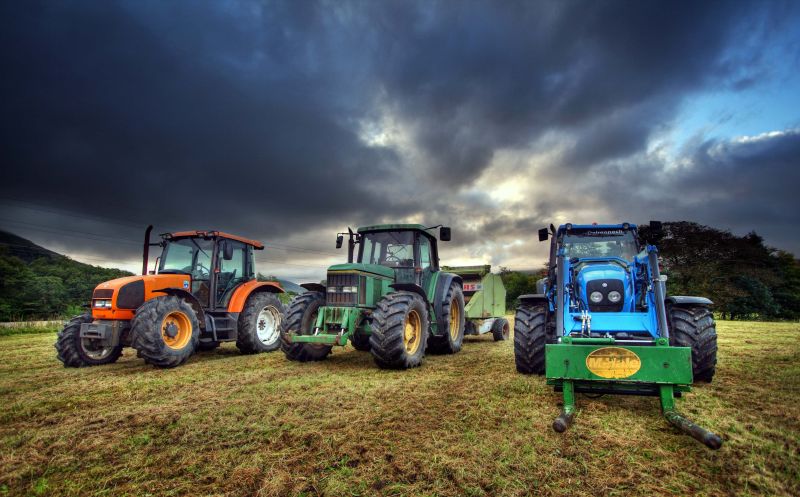

Myths About Industrial Agriculture
By Vandana Shiva, Published in The Tribune
Reports trying to create doubts about Organic Agriculture are suddenly flooding the media. There are two reasons for this. Firstly, people are fed up of the corporate assault of toxic pesticides and Genetically Modified Organisms (GMOs). Secondly people are turning to organic agriculture and organic food as a way to end the toxic war against the Earth and our bodies. At a time when industry has set its eyes on the super-profits to be harvested from seed monopolies through patented seeds and seeds engineered with toxic genes and genes for making crops resistant to herbicides, people are seeking food freedom through organic, nonindustrial food. The food revolution is the biggest revolution of our times, and industry is panicking. So it spins propaganda, hoping that in the footsteps of Goebbels, a lie told a hundred times will become the truth. But food is different. We are what we eat. We are our own barometers. Our farms and our bodies are our labs, and every farmer and every citizen is a scientist who knows best how bad farming and bad food hurts the land and our health, and how good farming and good food heals the planet and people.
One example of Myths about Industrial Agriculture is in the 8 Aug 2012 The Tribune by Rob Johnston, “The Great Organic Myths,” which tries to argue without any evidence that:
Organic foods are not healthier or better for the environment – and they’re packed with pesticides. In an age of climate change and shortages, these foods are an indulgence the world can’t afford.
This article had been published in 2008 by The Independent and rebutted, but was used by the Tribune without the rebuttal. Every argument in the article is fraudulent.
httpvh://youtu.be/5M_sppz11eY
Vandana Shiva on Industrial Agriculture
The dominant myth of industrial agriculture is that it produces more food and is land saving. However, the more industrial agriculture spreads, the more hungry people we have. And the more industrial agriculture spreads, the more land is grabbed. Productivity in industrial agriculture is measured in terms of “yield” per acre, not overall output. And the only input taken into account is labor, which is abundant, not natural resources which are scarce.
A resource hungry and resource destructive system of agriculture is not land saving, it is land demanding. That is why industrial agriculture is driving a massive planetary land grab. It is leading to the deforestation of the rainforests in the Amazon for soya and in Indonesia for palm oil. And it is fueling a land grab in Africa, displacing pastoralists and peasants. Industrial agriculture is responsible for 75% of biodiversity erosion, 75% of water destruction, 75% of land degradation and 40% of greenhouse gases. It is too heavy a burden on the planet. And as the 270,000 farmers’ suicides in India show, it is too heavy a burden on our farmers. The toxics and poisons used in chemical farming are creating a health burden for our society. Remember Bhopal. Remember the Endosulfan victims in Kerala. And remember Punjab’s Cancer train. Navdanya’s forthcoming report “Poisons in our Food” is a synthesis of all studies on the health burden of pesticides which are used in industrial agriculture but not in organic farming.
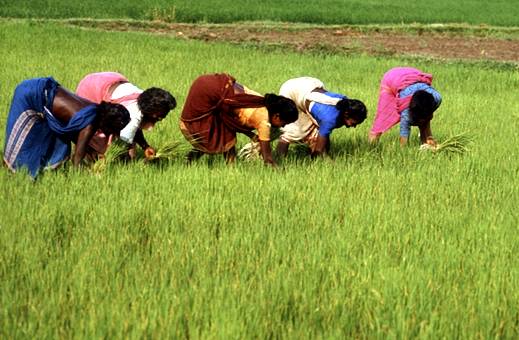
Industrial agriculture is an inefficient and wasteful system which is chemical intensive, fossil fuel intensive and capital intensive. It destroys nature’s capital on the one hand and society’s capital on the other, by displacing small farms and destroying health. It uses 10 units of energy as input to produce one unit of energy as food. This waste is amplified by anther factor of ten when animals are put in factory farms and fed grain, instead of grass in free range ecological systems, Rob Johnston celebrates these animal prisons as efficient, ignoring the fact that it takes 7 kg of grain to produce one kg of beef, 4kg of grain to produce 1 kg of pork and 2.4 kg of grain to produce 1 kg of chicken. The diversion of food grains to feed is a major contributor to world hunger. And the shadow acres to produce this grain are never counted. Europe uses 7 times the area outside Europe to produce feed for its factory farms.
Targeting Small Farms
Small farms of the world provide 70% of the food, yet are being destroyed in the name of low “yields.” 88% of the food is consumed within the same eco-region or country where it is grown. Industrialization and globalization is the exception, not the norm. And where industrialization has not destroyed small farms and local food economies, biodiversity and food are bringing sustenance to people. The biodiversity of agriculture is being maintained by small farmers. As the ETC report states “peasants breed and nurture 40 livestock species and almost 8000 breeds. Peasants also breed 5000 domesticated crops and have donated more than 1.9 million plant varieties to the world’s gene banks. Peasant fishers harvest and protect more than 15,000 freshwater species. The work of peasants and pastoralists maintaining soil fertility is 18 times more valuable than the synthetic fertilizers provided by the seven largest corporations” (ETC Group, “Who Will Feed Us”).
When this biodiversity rich food system is replaced by industrial monocultures, when food is commodified, the result is hunger and malnutrition. Of the world’s 6.6 billion, 1 billion are not getting enough food; another billion might get enough calories but not enough nutrition, especially micro nutrients. Another 1.3 billion who are obese suffer the malnutrition of being condemned to artificially cheap, calorie rich, nutrient poor processed food.
Hunger By Design
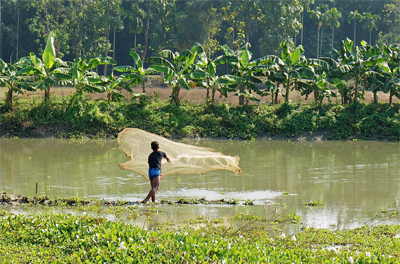
A series of media reports have covered another study by a team led by Bravata, a senior affiliate with Stanford’s Center for Health Policy, and Crystal Smith-Spangler, MD, MS, an instructor in the school’s Division of General Medical Disciplines and a physician-investigator at VA Palo Alto Health Care System, did the most comprehensive meta-analysis to date of existing studies comparing organic and conventional foods. They did not find strong evidence that organic foods are more nutritious or carry fewer health risks than conventional alternatives, “though consumption of organic foods can reduce the risk of pesticide exposure.”
This study can hardly be called the “most comprehensive meta analysis.” The researchers sifted through thousands of papers and identified 237 of the most relevant to analyze. This already exposes the bias. The biggest meta analysis on Food and Agriculture has been done by the United Nations as the International Assessment of Agricultural Knowledge, Science and Technology (IAASTD).
Parading Junk Science
About 400 scientists from across the world worked for four years to analyze all publications on different approaches to agriculture, and concluded that chemical industrial agriculture is no longer an option, only ecological farming is. Yet the Stanford team presents itself as the most comprehensive study, and claims there are no health benefits from organic agriculture, even though there were no long-term studies of health outcomes of people consuming organic versus conventionally produced food; the duration of the studies involving human subjects ranged from two days to two years. Two days does not make a scientific study. No impact can be measured in a two day study. This is junk science parading as science.
One principle about food and health is that our food is as healthy as the soil on which it grows is. And it is as deficient as the soils become with chemical farming. Industrial chemical agriculture creates hunger and malnutrition by robbing crops of nutrients. Industrially produced food is nutritionally empty mass, loaded with chemicals and toxins. Nutrition in food comes from the nutrients in the soil. Industrial agriculture, based on the NPK mentality of synthetic nitrogen, phosphorous and potassium based fertilizers leads to depletion of vital micro nutrients and trace elements such as magnesium, zinc, calcium, iron.
David Thomas, a geologist turned nutritionist, discovered that between 1940 and 1991, vegetables had lost – on average – 24 percent of their magnesium, 46 percent of their calcium, 27 percent of their iron and no less than 76 percent of their copper (Ref: David Thomas ‘A study on the mineral depletion of the foods available to us as a nation over the period 1940 to 1991’. Nutrition and Health 2003; 17: 85-115). Carrots had lost 75 percent of their calcium, 46 percent of their iron, and 75 percent of their copper. Potatoes had lost 30 percent of their magnesium, 35 percent calcium, 45 percent iron and 47 percent copper.
To get the same amount of nutrition people will need to eat much more food. The increase in “yields” of empty mass does not translate into more nutrition. In fact it is leading to malnutrition.
Poor Nutrition
The IAASTD recognizes that through an agro-ecological approach “agro-ecosystems of even the poorest societies have the potential through ecological agriculture and Integrated Pest Management (IPM) to meet or significantly exceed yields produced by conventional methods, reduce the demand for land conversion for agriculture, restore ecosystem services (particularly water) reduce the use of and need for synthetic fertilizers derived from fossil fuels, and the use of harsh insecticides and herbicides.”
Our 25 years of experience in Navdanya shows that ecological, organic farming is the only way to produce food without harming the planet and people’s health. This a a trend that will grow, no matter how many pseudo scientific stories are planted in the media by the industry.
Dr Vandana Shiva is an Indian physicist, environmentalist and recipient of the 2010 Sydney Peace Prize. She is the author of Making Peace with the Earth, and Violence of the Green Revolution, and Director, Research Foundation for Science Technology & Ecology, New Delhi.
Updated 27 May 2018






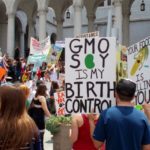
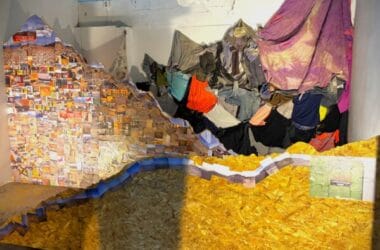





Pingback: Vandana Shiva: Maintaining Biodiversity with Seeds of Freedom | WilderUtopia.com